Many of our migratory species of birds have left Maine for the winter. We have seen many species of resident and varying-distance migratory birds making their way back to the area. October is also a wonderful month to observe migratory birds on their journeys back to their winter destinations. This fall has been especially wonderful for observing warblers. I have seen many different types of these birds and few have even been frequent visitors at the feeders. In this post, I would like to share a few photographs of the species of birds that I have seen this month. I will also include some migration information about them.

The red-breasted nuthatch Sitta canadensis is a small songbird that is often a permanent resident, short-distance migrant, or irruptive species if its food supply fails.
This individual has shown up a couple of weeks ago and has been very amusing so far. I believe it is a young bird and it has been quite vocal and not shy around people. This nuthatch has been the first and last bird at the feeders each day. We can usually expect there to be about three to four of these birds at the feeders during the fall and winter.
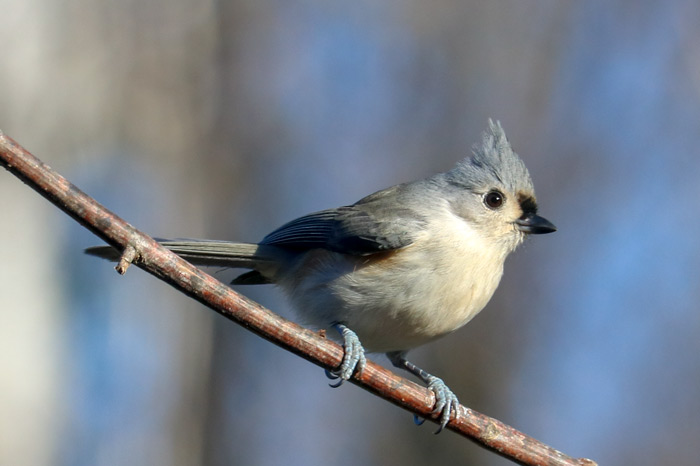
The tufted titmouse Baeolophus bicolor is a small year-round resident songbird in the tit and chickadee family Paridae. These birds are also quite vocal and frequent visitors at the feeders.
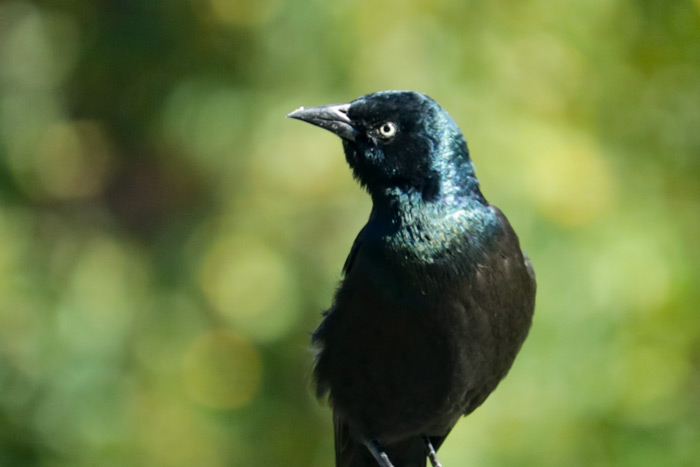
The common grackle Quiscalus quiscula is a large and colorful blackbird that is a resident or short-distance migrant.
This photograph is one of three grackles that showed up at the feeders. These birds usually show up in great numbers and take over the feeders during the summer. These three birds kept to themselves and weren’t aggressive toward the other birds at all. Perhaps, this was because there were so few of them and they were outnumbered by the other birds.
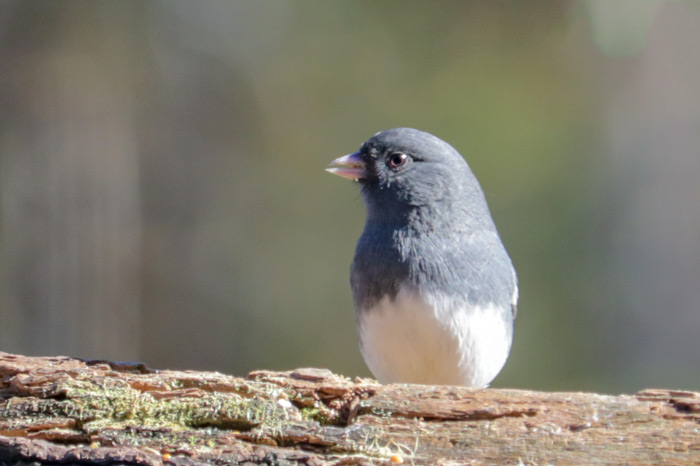
Dark-eyed juncos Junco hyemalis are a species of juncos. These birds are resident to medium-distance migrants. Juncos that breed in Canada and Alaska migrate to the southern United States during the winter.
These birds usually show up in flocks along with the black-capped chickadees.
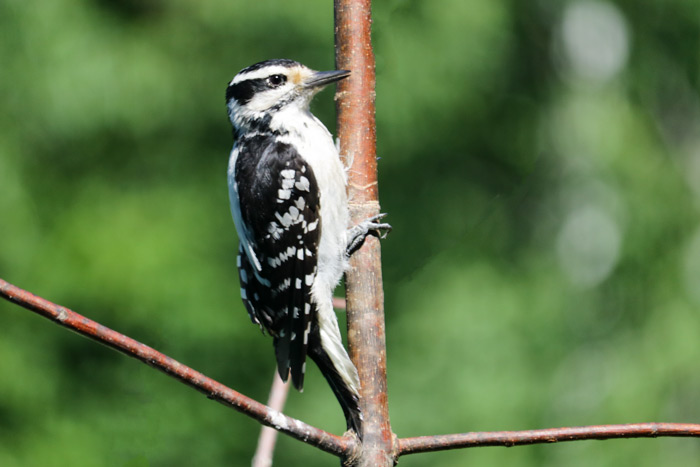
The hairy woodpecker Leuconotopicus villosus is a medium-sized resident woodpecker. Birds from some northern populations may wander away from their home range during winter. Birds that breed inland or at high elevations may move to the coast or to lower elevations during some winters.
This woodpecker shows up every day. Her male offspring shows up every day as well.
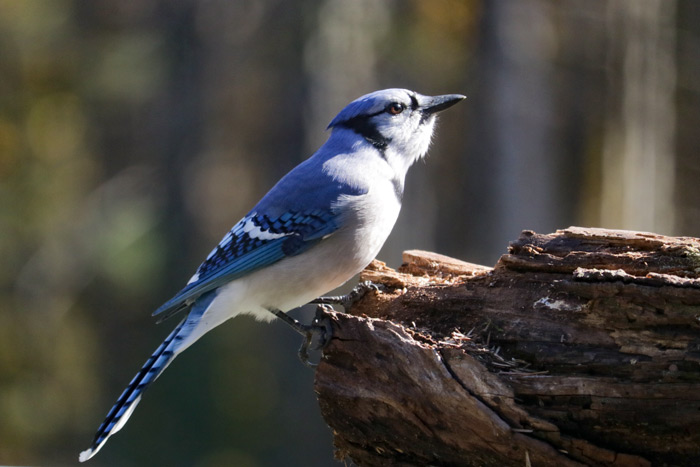
The blue jay Cyanocitta cristata is a passerine bird in the family Corvidae, native to North America. These birds are residents or short-distance migrants.
The blue jays seem to come and go during the spring and summer. The young birds have been showing up quite frequently at the feeders as well as eating leftover apples on the apple trees.
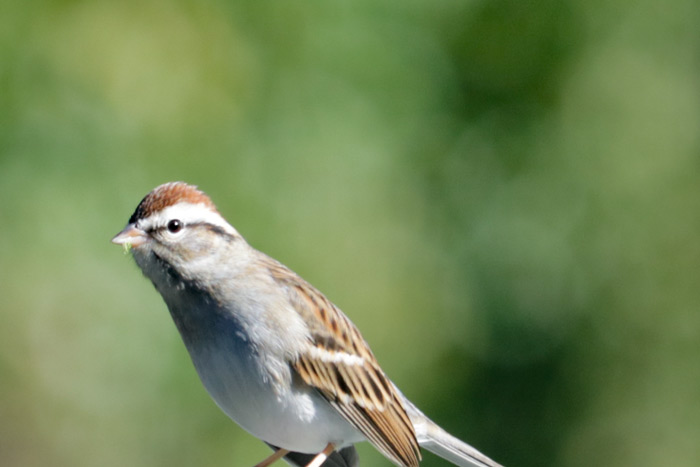
The chipping sparrow Spizella passerina is a species of American sparrow and a short-distance migrant.
I haven’t seen many of these birds in the yard since we’ve been here until now.
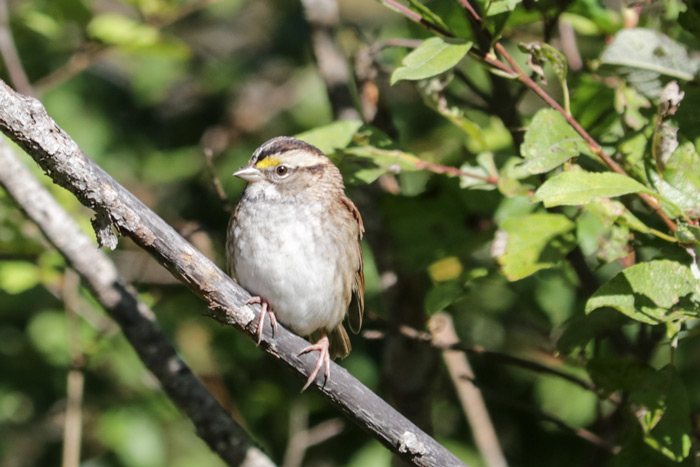
The white-throated sparrow Zonotrichia albicollis is a passerine bird of the American sparrow that is a short to a medium-distance migrant. Even though these sparrows are found in the Northeast year-round, the birds that breed here tend to leave in fall and are replaced by wintering birds that bred farther north.
I usually see one male that sings his heart out during spring and summer. I didn’t see any of these sparrows until a couple of weeks ago. There are now quite a few at the feeders and in the yard.
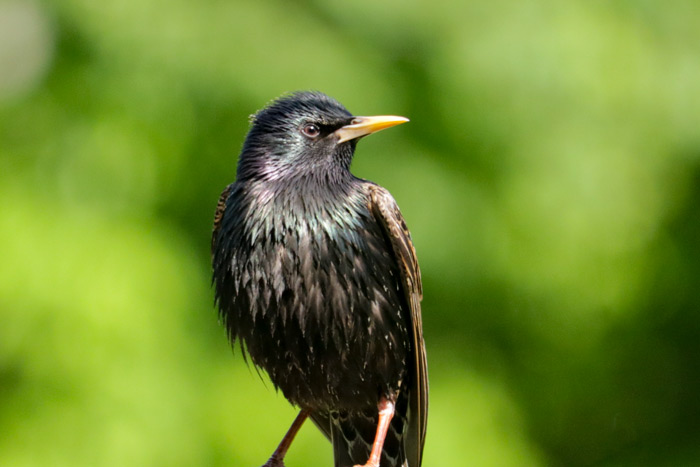
The European starling Sturnus vulgaris is a chunky and medium-sized resident to a short-distance migrant.
These birds usually show up in great numbers during the summer and take over the lawn. This month there were about three coming to the feeder and they weren’t aggressive toward the other birds at all, which is usually the case.
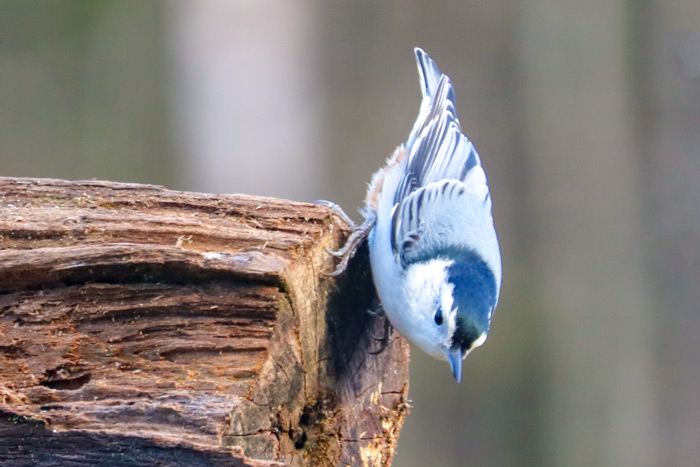
The white-breasted nuthatch Sitta carolinensis is a small songbird of the nuthatch family and is a year-round resident.
There have been three of these birds frequenting the feeders. This is about the same number every year.
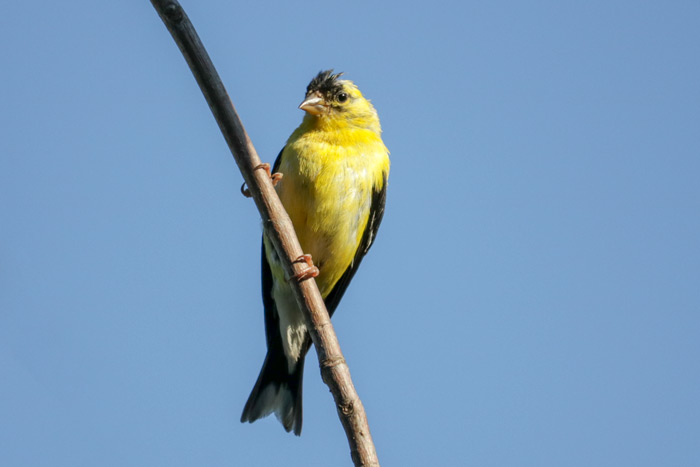
The American goldfinch Spinus tristis is a small short-distance migrant in the finch family found in North America. These birds are erratic migrants that follow cone crops.
There have been a few of these birds this visiting this month, but I expect to see more during the winter.
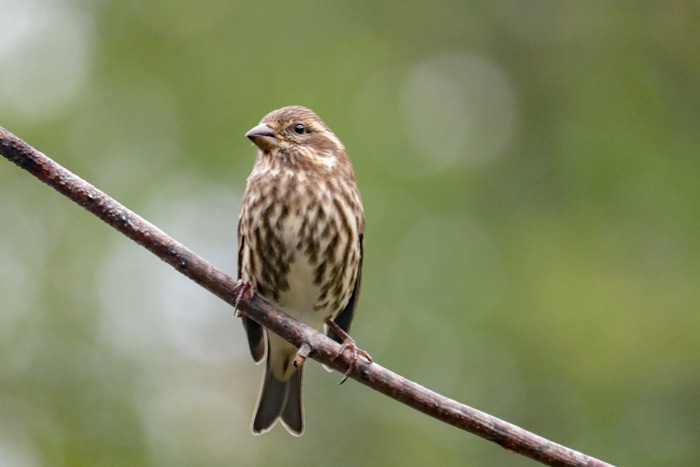
The purple finch Haemorhous purpureus is a bird in the finch family.
I have seen many more females this season than usual.

The purple finch Haemorhous purpureus is a resident to a short-distance migrant.
There have been quite a few of these birds showing up at the feeders this season.
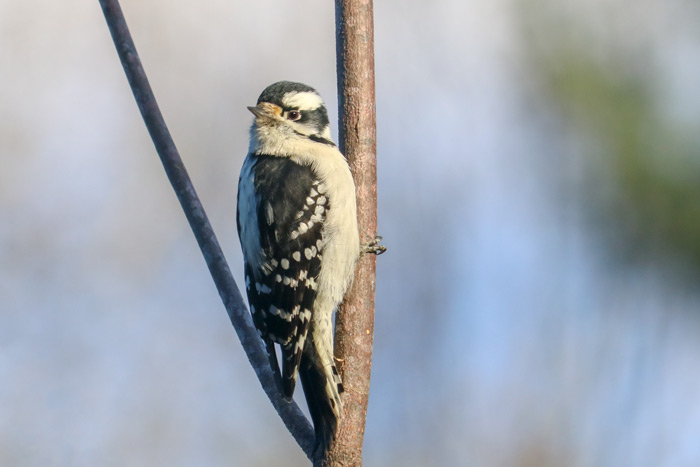
The downy woodpecker Dryobates pubescens is a resident woodpecker and the smallest in North America.
These birds usually don’t show up as much as the hairy woodpeckers, but they will be looking for suet very soon.

The northern cardinal Cardinalis cardinalis is a year-round resident bird that is also known informally as the redbird, common cardinal, or just a cardinal.
I find it very strange that we haven’t had these birds on a regular basis. We have always seen several of these birds in all of the places we have lived. I have seen one juvenile male the whole time we have lived here. This male stayed for a couple of minutes and I haven’t seen him since.
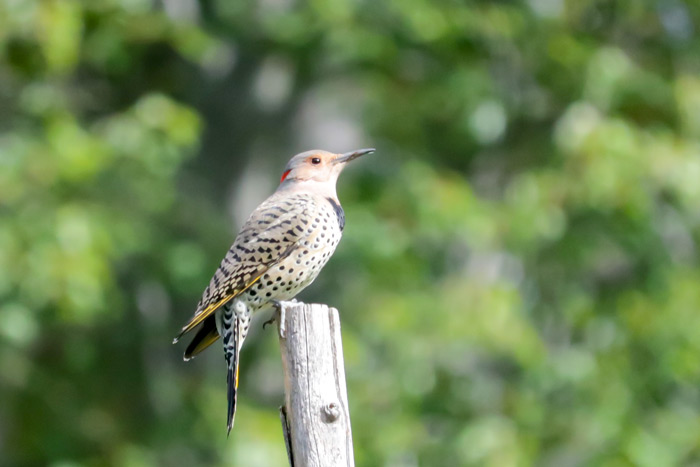
The northern flicker Colaptes auratus is a medium-sized bird of the woodpecker family. These birds are year-round residents or short-distance migrants. Flickers will leave the northern parts of their range to winter in the southern U.S.
I will see quite a few of these birds in the yard for a couple of weeks in October and then they will be gone.
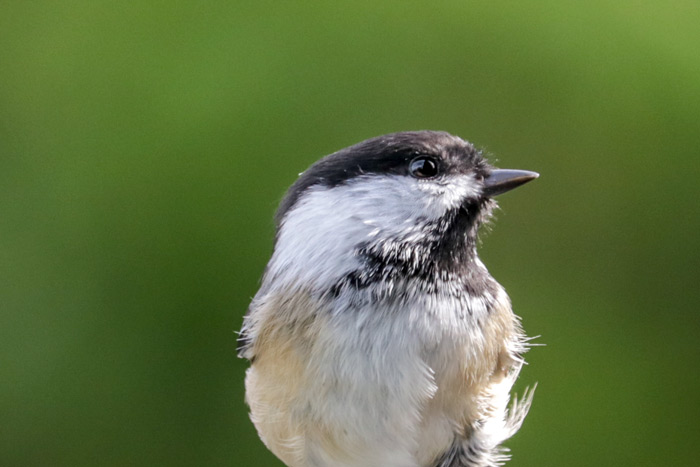
The black-capped chickadee Poecile atricapillus is a small, nonmigratory, North American songbird and the state bird of Maine.
These birds will come to the feeders, take a black sunflower seed and then fly away. This will go on all day long.

The mourning dove Zenaida macroura is a year-long resident and member of the dove family, Columbidae.
These birds are always here in the yard or at the feeders in great numbers.
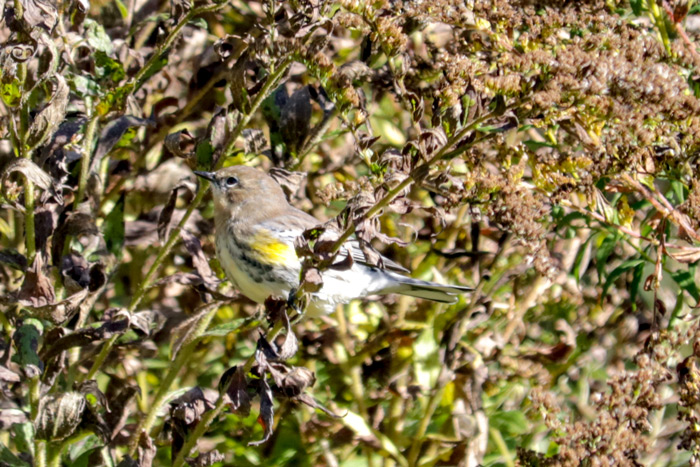
The yellow-rumped warbler Setophaga coronata is a North American bird species.
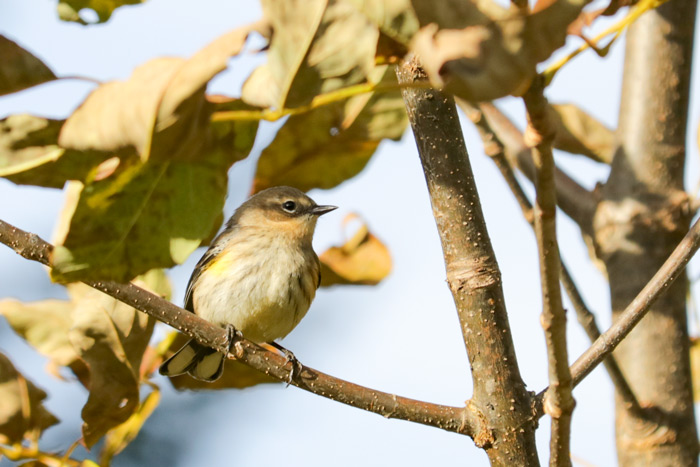
The yellow-rumped warbler Setophaga coronata is a short to a long-distance migrant. Populations migrate to wintering grounds in Mexico and throughout Central America.
I had seen an adult male earlier in the spring. I have also seen quite a few juveniles this month and there is one coming to the feeders on a regular basis now.
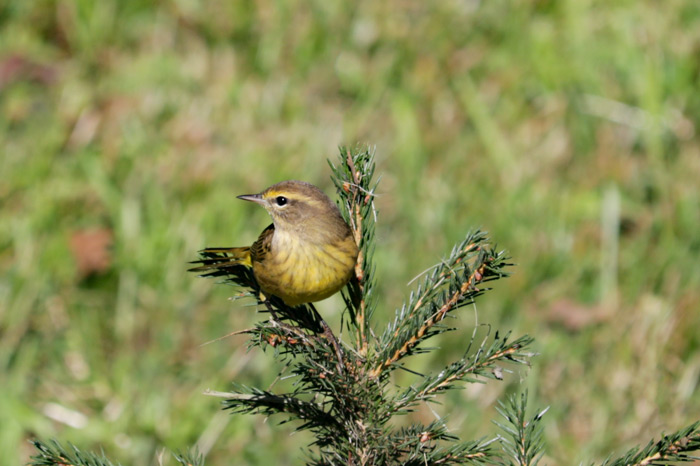
The palm warbler Setophaga palmarum is a small songbird of the New World warbler family.
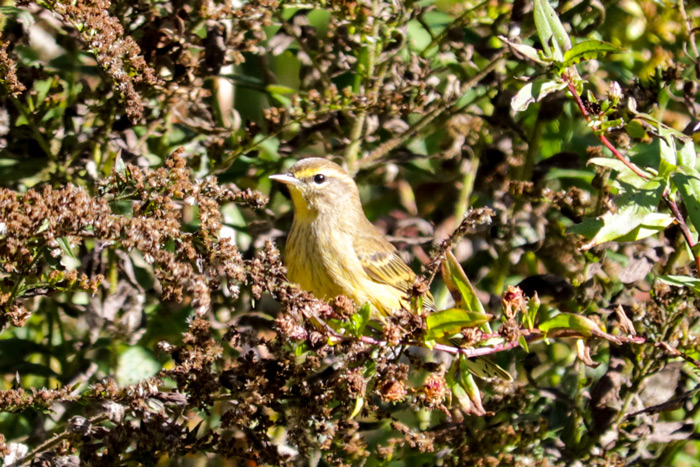
The palm warbler Setophaga palmarum is a medium-distance migrant.
I have never seen this type of warbler before. They have been spending a lot of time in the backyard.
Resource used for this post:
allaboutbirds.org
Leave a Reply